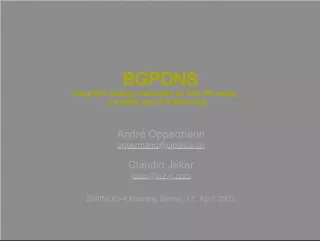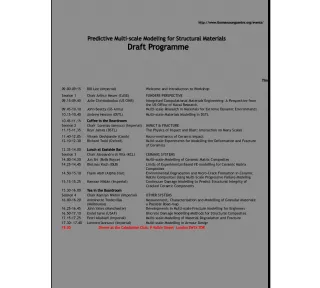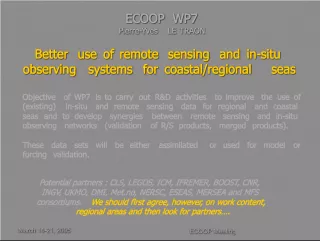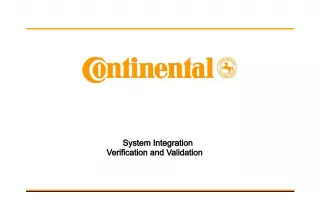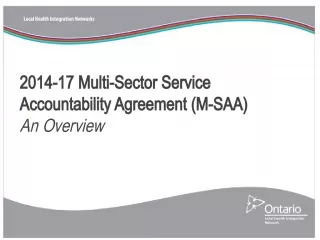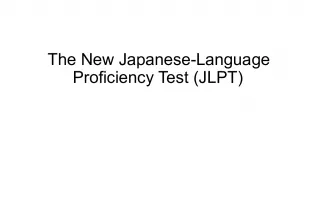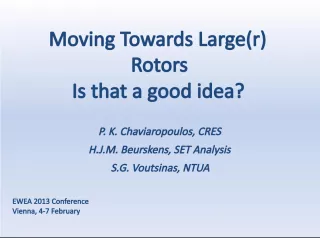Multi-Lab, Multi-Instrument Data Validation of Petroleum Products with ISO/IEC Proficiency Testing Program


This proficiency testing program allows multiple laboratories with multiple instruments to validate their data on petroleum products using ISO/IEC standards, ensuring accuracy and reliability.
- Uploaded on | 7 Views
-
 voyislav
voyislav
About Multi-Lab, Multi-Instrument Data Validation of Petroleum Products with ISO/IEC Proficiency Testing Program
PowerPoint presentation about 'Multi-Lab, Multi-Instrument Data Validation of Petroleum Products with ISO/IEC Proficiency Testing Program'. This presentation describes the topic on This proficiency testing program allows multiple laboratories with multiple instruments to validate their data on petroleum products using ISO/IEC standards, ensuring accuracy and reliability.. The key topics included in this slideshow are ISO/IEC standards, proficiency testing, petroleum products, multi-lab, multi-instrument,. Download this presentation absolutely free.
Presentation Transcript
1. ISO/IEC 17043:2010 Proficiency Testing Program for Multiple-Laboratory/ Multiple Instrument Data Validation of Petroleum Products. ISO/IEC 17043:2010 Proficiency Testing Program for Multiple-Laboratory/ Multiple Instrument Data Validation of Petroleum Products. PITTCON 2012 Roland St. Germain* PITTCON 2012 Roland St. Germain* Mike Travers Mike Travers Tim Alavosus, Ph.D. Tim Alavosus, Ph.D. 13 March 2012
2. VHG Labs' Original Proficiency Testing Program (PTP) VHG Labs has developed a VHG Labs has developed a Proficiency Testing Program (PTP) to measure: Proficiency Testing Program (PTP) to measure: Elements in oil by ICP or RDE Elements in oil by ICP or RDE Kinematic Viscosity Kinematic Viscosity Elements in Lube oil by XRF Elements in Lube oil by XRF Sulfur in various matrices Sulfur in various matrices PB Lead in Isooctane PB Lead in Isooctane
3. Proficiency Testing Proficiency Testing Program Program (PTP) (PTP)
4. What is Proficiency Testing? What is Proficiency Testing? Proficiency Testing is a regular evaluation of your laboratory instrumentation as compared to independent certified reference materials. Proficiency Testing is a regular evaluation of your laboratory instrumentation as compared to independent certified reference materials.
5. Many laboratories rely on their own instrument calibration techniques as their sole method of calibration verification. Many laboratories rely on their own instrument calibration techniques as their sole method of calibration verification. Why Use Proficiency Testing?
6. Specific Benefits of Regular Proficiency Testing: 1. Confirm Instrument Performance 1. Confirm Instrument Performance 2. Demonstrate Competitive Advantage 2. Demonstrate Competitive Advantage 3. Provide Greater Confidence Levels for Your Labs Customers 3. Provide Greater Confidence Levels for Your Labs Customers 4. Shift/Operator Verification 4. Shift/Operator Verification
7. There can often exist a bias from one instrument to another of the same general type based upon: There can often exist a bias from one instrument to another of the same general type based upon: design (i.e., different mfg or model) design (i.e., different mfg or model) operating parameters operating parameters methodology methodology conditions used conditions used environmental factors. environmental factors. Why Use Proficiency Testing?
8. It is useful to have a program that regularly determines the relative correlation of one or more instruments within the same laboratory facility or different locations. It is useful to have a program that regularly determines the relative correlation of one or more instruments within the same laboratory facility or different locations. Why Use the PTP?
9. More about Proficiency Testing Historically, Proficiency Testing often used a Round-Robin approach. Historically, Proficiency Testing often used a Round-Robin approach. This method is painful and tedious. This method is painful and tedious. It takes so long, it is a poor method of instrument evaluation, as so many parameters are likely to change over time. It takes so long, it is a poor method of instrument evaluation, as so many parameters are likely to change over time. It does not benefit from the use of modern technology and instant performance evaluation It does not benefit from the use of modern technology and instant performance evaluation
10. How the original VHG PTP Works: How the original VHG PTP Works: You order the type of test(s) you want You order the type of test(s) you want PTP is sent directly to your lab with login password PTP is sent directly to your lab with login password You run the samples at your convenience, whenever you want You run the samples at your convenience, whenever you want Enter results into www.vhglabs.com Enter results into www.vhglabs.com You Receive the results IMMEDIATELY! You Receive the results IMMEDIATELY!
11. Proficiency Testing Program (PTP) from VHG Labs VHG Labs PTP provides a method for validation of ICP, XRF and viscosity. VHG Labs PTP provides a method for validation of ICP, XRF and viscosity. The VHG Labs PTP is currently the only program of its kind to provide an instant response to submitted values, with convenient color-coded pass/fail indications in green (pass) , yellow (borderline) , and red (fail). The VHG Labs PTP is currently the only program of its kind to provide an instant response to submitted values, with convenient color-coded pass/fail indications in green (pass) , yellow (borderline) , and red (fail).
12. In case you asked In case you asked Currently Assigned Values for ICP Metallo-organic PTP test Currently Assigned Values for ICP Metallo-organic PTP test For all certified values For all certified values > 20 ppm: > 20 ppm: Green = within +/- 10% Green = within +/- 10% Yellow = within +/-15% Yellow = within +/-15% Red > 15% Red > 15% < 20 ppm: < 20 ppm: Green = within +/- 1ppm Green = within +/- 1ppm Yellow = within +/-2ppm Yellow = within +/-2ppm Red > 2ppm Red > 2ppm These values may be customized as an added-value option. These values may be customized as an added-value option. Color feature not available for Viscosity tests. Color feature not available for Viscosity tests.
13. The PTP User Interface The PTP User Interface ALL ONLINE: ALL ONLINE: Simply type in your results Then: 100 105 112 121 102 100
14. The PTP User Interface The PTP User Interface Validation is automatic and instantaneous
15. In ICP analysis, there are several common possible sources of error: In ICP analysis, there are several common possible sources of error: Sample Preparation Sample Preparation Sample Introduction Sample Introduction Sipper Probe Sipper Probe Pump Tubing Pump Tubing Nebulizer Nebulizer Torch: O-rings, fittings, and connections - Possible air leaks Torch: O-rings, fittings, and connections - Possible air leaks How Does the PTP Help? How Does the PTP Help?
16. VHG NEW ISO 17043 PTP VHG NEW ISO 17043 PTP The new PTP is designed to provide laboratories with a method of monitoring their analytical performance measured against samples that are ISO/IEC 17043 compliant. The new PTP is designed to provide laboratories with a method of monitoring their analytical performance measured against samples that are ISO/IEC 17043 compliant.
17. ISO/IEC 17043:2010 ISO/IEC 17043:2010 VHG Labs PTP incorporates the requirements for 17043: VHG Labs PTP incorporates the requirements for 17043: Normalized Error ( E n ). Normalized Error ( E n ). (Note: 17043 response is not instantaneous) (Note: 17043 response is not instantaneous)
18. ISO/IEC 17043:2010 ISO/IEC 17043:2010 Takes performance testing further Takes performance testing further Provides guidelines for error ranges Provides guidelines for error ranges These are based on calculations of laboratory uncertainties These are based on calculations of laboratory uncertainties These uncertainties are called Normalized Error, or E n These uncertainties are called Normalized Error, or E n You can calculate this easily You can calculate this easily
19. ISO 17043: Normalized Error En is error, normalized and is calculated as: En is error, normalized and is calculated as: E n = (x lab x VHG )/ (U 2 lab + U 2 VHG ) E n = (x lab x VHG )/ (U 2 lab + U 2 VHG ) Where: Where: x lab is your analytical result x lab is your analytical result x VHG is the VHG Certified Value x VHG is the VHG Certified Value U lab is the expanded uncertainty that you reported U lab is the expanded uncertainty that you reported U VHG is the expanded uncertainty of the VHG Certified Value (95% coverage) U VHG is the expanded uncertainty of the VHG Certified Value (95% coverage)
20. Basis for Pass/Fail Criteria Basis for Pass/Fail Criteria Pass = -1< E n <+1 (Green) Pass = -1< E n <+1 (Green) Fail = E n <-1 or E n > +1 (Red) Fail = E n <-1 or E n > +1 (Red)
21. ISO/IEC 17025 PT ISO/IEC 17025 PT ISO Registrars strongly recommend the use of ISO 17043 PTP when performing required Proficiency Tests for ISO/IEC 17025 accreditation . ISO Registrars strongly recommend the use of ISO 17043 PTP when performing required Proficiency Tests for ISO/IEC 17025 accreditation .
22. User interface User interface
23. Entering Your Data Entering Your Data
24. Entering Your Data Entering Your Data
28. Specific Benefits of Regular Proficiency Testing: 1. Confirm Instrument Performance 1. Confirm Instrument Performance 2. Shift/Operator Verification 2. Shift/Operator Verification 3. Demonstrate Competitive Advantage 3. Demonstrate Competitive Advantage 4. Provide Greater Confidence Levels 4. Provide Greater Confidence Levels
29. Thank You! For more information, please contact: Roland St. Germain VHG Labs 276 Abby Rd. Manchester, NH 03053 (+1) 603.622.7660 roland@vhglabs.com BOOTH 3566
